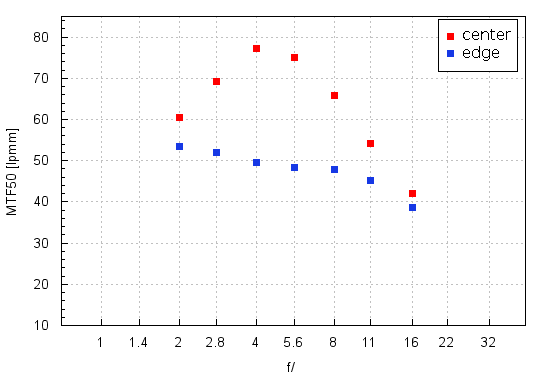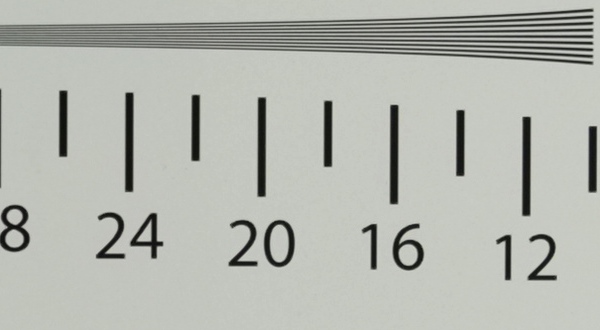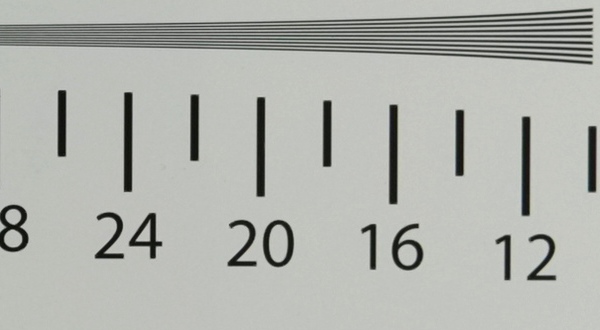Fujifilm Fujinon XF 35 mm f/2 R WR
4. Image resolution
Let’s remind here that the best fixed focus lenses of the Fujifilm X system, tested that way, might reach results of 73-76 lpmm and the decency level is situated near 42-43 lpmm. The record of 78 lpmm is held by the Fujinon XF 90 mm f/2 R LM WR.
The graph below presents MTF50 function values, depending on the aperture, the lens got in the frame centre and on its edge.
Please Support UsIf you enjoy our reviews and articles, and you want us to continue our work please, support our website by donating through PayPal. The funds are going to be used for paying our editorial team, renting servers, and equipping our testing studio; only that way we will be able to continue providing you interesting content for free. |
- - - - - - - - - - - - - - - - - - - - - - - - - - - - - - - - - - - - - - - - - - - - - - - -

The resolution in the centre is truly sensational. First of all the result the lens got by f/4.0 amounts to about 77 lpmm and it is very close to the record value. What’s more, already at the maximum relative aperture the MTFs are able to exceed a very high level of 60 lpmm. It is clear the performance in the frame centre was taken care of properly.
Perhaps worse results on the edge of the frame are the price you have to pay for the effort to produce record-breaking values in the centre along with keeping small physical dimensions of the lens; anyway it must be clearly said they are far from any records and, overall, untypical. They highest MTFs you can reach by f/2.0 and then they decrease slowly. It is a very interesting phenomenon especially as you deal with such a fast lens, aperture-wise. A particular behaviour of off-axis aberrations, mainly the chromatic aberration, is responsible for it. In the next chapter you are going to see how fast it increases on stopping down.
As a kind of consolation you might add that in a range from f/2.0 to f/11 on the very edge of the frame the image remains completely useful even if it is not the sharpest.
The summary of this chapter cannot be negative. You get a brilliant performance in the frame centre and a decent one on its edge. When you deal with a small, handy f/2.0 instrument, it would be difficult to ask for more.
At the end of this chapter, traditionally, we present crops taken from photos of our resolution testing chart, saved as JPEG files along with RAW files we used for the analysis above.
| Fujifilm X-E1, JPEG, f/2.0 |
 |
| Fujifilm X-E1, JPEG, f/4.0 |
 |






